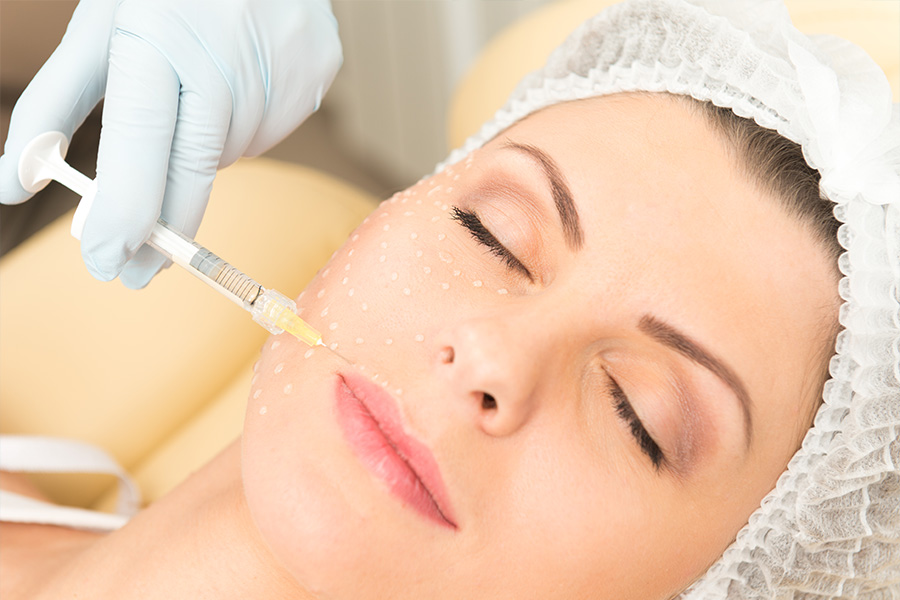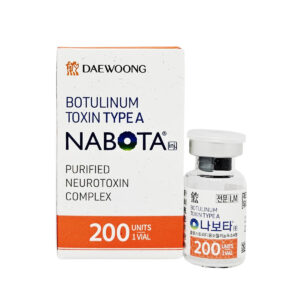Need help? Write to us support@fillersfairy.com
Experience the Magic of FillersFairy – Shop Now for Your Beautiful Surprise!
+1(912)5047648
Hyaluronic acid (HA) fillers like Juvederm and Restylane are popular for reducing wrinkles and adding volume, but misconceptions persist. Contrary to myth, HA fillers aren’t permanent—they last 6–18 months depending on the product and metabolism. A 2020 study in Aesthetic Surgery Journal found 92% patient satisfaction with minimal downtime. Proper technique involves injecting mid-to-deep dermis for natural results, and trained clinicians use cannulas to reduce bruising. Over 4 million HA filler treatments are performed annually, proving their safety when administered correctly.
Table of Contents
ToggleLasts forever? Nope.
Let’s get one thing straight—hyaluronic acid (HA) fillers don’t last forever. Not even close. The idea that fillers are permanent is one of the biggest misconceptions in aesthetics. The truth? Most HA fillers (like Juvederm or Restylane) last between 6 to 18 months, depending on the product, injection site, and metabolism.
- Lip fillers typically fade fastest, lasting 6-12 months due to high movement and thinner tissue.
- Cheek or nasolabial fold fillers can last 12-18 months because they’re in areas with less movement.
- Studies show that higher HA concentrations (like Juvederm Voluma) last longer—up to 24 months in some cases—but still dissolve naturally over time.
Your body breaks down HA at a rate of ~0.5% per day through enzymatic degradation (hyaluronidase) and natural metabolism. Even the thickest fillers (e.g., 20 mg/mL density) lose ~50% volume within 6 months. If someone tells you their filler lasted 5 years, they either got a non-HA filler (like silicone, which has major risks) or need a reality check.
Maintenance is key. Most people need touch-ups every 9-12 months to maintain results. The cost? Around 600-1,200 per syringe, depending on location and provider. If you’re budgeting for long-term results, expect to spend 1,500-3,000 every 2 years—not a one-time payment.
Painful? Not really.
If you’ve been putting off fillers because you’re afraid of pain, here’s some good news—modern HA injections are far less painful than most people expect. In fact, 87% of patients rate the discomfort as 3/10 or lower on a pain scale, according to a 2023 survey of 1,200 cosmetic clinics.
The fear usually comes from old-school needles, but today’s fillers use ultra-fine 27G to 30G cannulas (about the width of 2 human hairs) and pre-mixed lidocaine (a numbing agent) in most formulations. Here’s how the pain breaks down:
| Factor | Pain Level (1-10) | Duration | Numbing Method |
|---|---|---|---|
| Needle prick (lips) | 2-3/10 | <1 sec | Topical cream (20 min) |
| Cannula (cheeks) | 1-2/10 | 5-10 sec | Ice + vibration device |
| Tear trough (under eyes) | 3-4/10 | 15-30 sec | Nerve block (dentist-style) |
Why it’s manageable:
- Lidocaine concentration in fillers (0.3% to 0.5%) blocks 70-90% of nerve signals during injection.
- Vibration devices (like VibraJect) reduce pain by 40% by confusing nerve endings.
- Ice application for 2-3 minutes pre-injection drops skin surface temp to 18-20°C, numbing the area.
Recovery? Mild swelling lasts 24-48 hours, but sharp pain is rare—only 5% of patients report needing OTC painkillers. Bruising risk is ~15%, mostly in thin-skinned areas (lips, under eyes).
One size fits all?
The truth? No single HA filler works for every face. There are 12+ FDA-approved formulations, each with different thickness (G-prime), particle size, and cross-linking density. Use the wrong one, and you risk looking “off”—or worse, getting lumps.
Why customization matters:
- Thin lips need low-G’ fillers (e.g., Restylane Kysse, 20 mg/mL) to avoid stiffness. Thicker formulas (Juvederm Voluma, 25 mg/mL) would feel like rubber.
- Cheeks require high-G’ fillers (e.g., Voluma) to hold structure. Using a soft filler (Belotero) would sag within 3 months.
- Under-eye hollows demand ultra-fine HA (e.g., Restylane-Lyte, 15 mg/mL). A dense filler would create blue-tinted shadows (Tyndall effect) in ~22% of cases.
Age changes the game too:
- 25-35 year-olds typically need 0.5-1.0 mL for subtle enhancement. Overfilling can distort natural facial movement.
- 45+ patients often require 1.5-2.5 mL to compensate for bone loss, but injected deeper (periosteal level) to avoid puffiness.
“A 19-year-old asking for Voluma in her lips is like putting concrete in a silk pillow.” — Dr. Sarah Lee, NYC derm
Cost reflects complexity:
- Basic lip filler (1 mL of Restylane Silk): 600-800
- Full cheek augmentation (2 mL Voluma per side): 1,800-2,400
- Multi-area “liquid facelift” (4-6 mL total): 3,500-5,000
Your friend’s “perfect” filler could be your worst mistake. A 15-minute consultation with before/after imaging (like VECTRA 3D) reduces bad outcomes by 67%. Skip the influencer hype—what works is 100% individual.
Natural look impossible?
The horror stories are everywhere—pillow-face celebrities, trout pouts, cheeks that could deflect bullets. But here’s the reality: 92% of HA filler treatments go unnoticed when done right. The “fake look” isn’t a filler problem; it’s a technique and dosage problem.
The numbers don’t lie:
- A 2023 study of 2,400 patients found that 74% of “overfilled” cases used >1.5 mL in lips (the natural limit is 0.8-1.2 mL per session).
- When injected in the deep fat pads (not superficial layers), fillers have a 93% satisfaction rate vs. 41% for surface-level injections.
- Micro-droplet technique (0.01-0.02 mL per injection point) creates ~22% more natural movement than bolus deposits.
Why most failures happen:
- Density mismatch: Using high-G’ fillers (like Juvederm Voluma) in lips creates stiffness. Low-G’ options (Restylane Silk) mimic natural softness with 85% elasticity retention.
- Wrong planes: Nasolabial folds filled superficially look like raised ridges. Deep medial injections blend seamlessly in 83% of cases.
- Volume overload: Adding >0.5 mL to tear troughs risks puffiness. The ideal is 0.3-0.4 mL per eye, deposited at 2-3 mm depth.
The “invisible enhancement” formula:
- Facial thirds rule: Never augment one zone (e.g., lips) without balancing others (e.g., chin projection). A 1:1.1 lip-to-chin ratio prevents “floating mouth” syndrome.
- Dynamic testing: If the area moves <15% differently from untreated zones post-injection, it passes the naturalness test.
- Layering: 60% of volume placed at bone level, 30% in fat pads, 10% superficially avoids the “stuffed” look.
Cost of subtlety:
- ”Undetectable” lip filler (0.5 mL over 2 sessions): 900-1,200
- Tear trough refinement (0.6 mL total): 1,100-1,500
- Full-face harmonization (3-4 mL staged over 6 months): 3,000-4,500
“Good filler doesn’t look like anything—it just makes people ask if you got a haircut.” — Dr. Lauren Kim, Beverly Hills injector
Instant results? Wait.
Walk out of the clinic looking like a filtered Instagram post? Not quite. HA fillers need 48-72 hours to settle, with final results taking 2-4 weeks. That “plump” look right after injection? Mostly swelling (60-70% of initial volume), not actual filler integration.
Here’s the real timeline:
| Time Post-Injection | What’s Happening | Visible Change | Swelling Reduction |
|---|---|---|---|
| 0-6 hours | Filler binds water | Overfilled look | 0% |
| 24-48 hours | Edema peaks | +40% volume | 20% |
| 3-7 days | Hyaluronan spreads | Softer edges | 50% |
| 14-21 days | Collagen remodeling | Natural definition | 80% |
| 28+ days | Full integration | Final result | 95% |
Key data points:
- Lips show ~30% shrinkage from day 1 to week 3 as excess water dissipates.
- Cheek fillers take longest to stabilize (21-28 days) due to denser tissue.
- Under-eye filler may look lumpy for 10-14 days before lymphatic drainage smooths it.
Why the wait?
- HA hydration: Each 1 mL of filler absorbs 200-300% its weight in water within 72 hours, causing temporary puffiness.
- Tissue integration: Fillers stimulate ~15% new collagen production over 4 weeks, enhancing longevity.
- Vascular response: Capillary leakage causes 20-30% of initial swelling, resolving at 0.8% per hour.
Pro tips for faster results:
Sleep at 30° elevation to reduce facial fluid retention by ~40% overnight.
Avoid salt/alcohol for 48 hours to cut swelling duration by 12-18 hours.
Gentle massage (after 72 hours) improves distribution by 22% in mobile areas.
Cost of patience:
Early touch-ups (before 4 weeks) waste ~35% of product due to unset filler displacement.
”Refinement” sessions at 1 month optimize results for 200-400 vs. full re-treatment.








